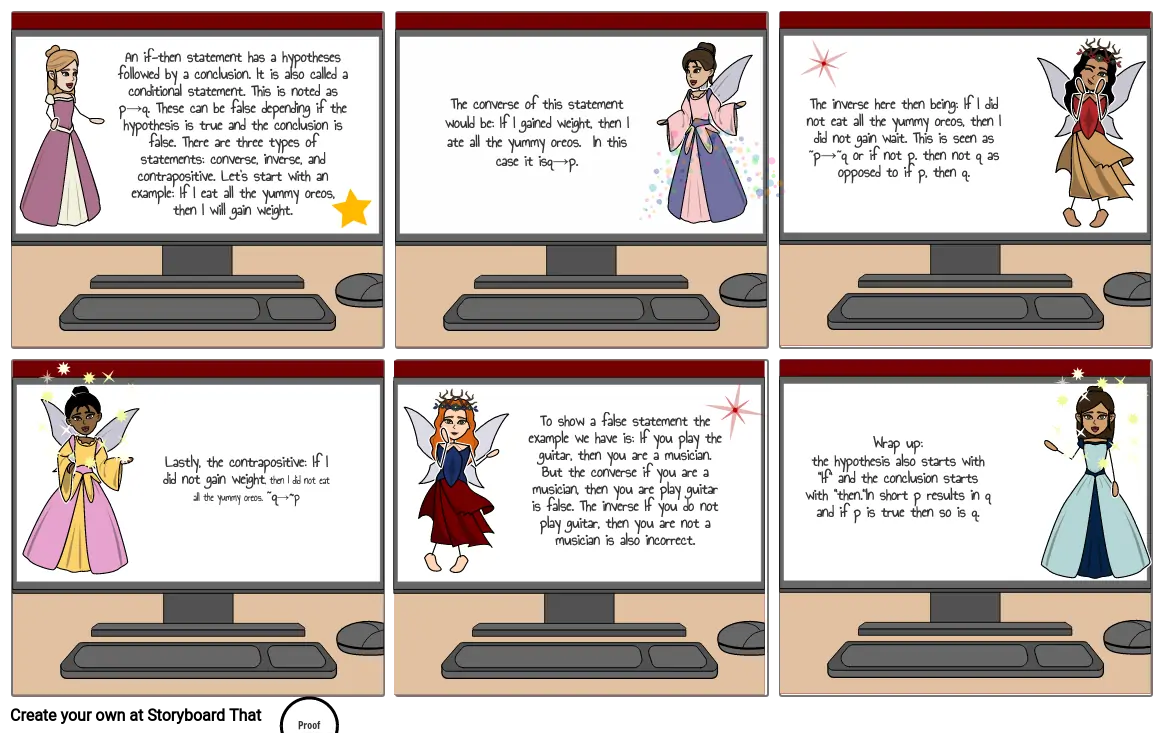fairy geometry

Storyboard Text
- An if-then statement has a hypotheses followed by a conclusion. It is also called a conditional statement. This is noted as p→q. These can be false depending if the hypothesis is true and the conclusion is false. There are three types of statements: converse, inverse, and contrapositive. Let's start with an example: If I eat all the yummy oreos, then I will gain weight.
- The converse of this statement would be: If I gained weight, then I ate all the yummy oreos. In this case it is q→p.
- The inverse here then being: If I did not eat all the yummy oreos, then I did not gain wait. This is seen as ~p→~q or if not p. then not q as opposed to if p, then q.
- Lastly, the contrapositive: If I did not gain weight, then I did not eat all the yummy oreos. ~q→~p
- To show a false statement the example we have is: If you play the guitar, then you are a musician. But the converse if you are a musician, then you are play guitar is false. The inverse If you do not play guitar, then you are not a musician is also incorrect.
- Wrap up:the hypothesis also starts with "If" and the conclusion starts with "then."In short p results in q and if p is true then so is q.
- Proof
Over 30 Million Storyboards Created

